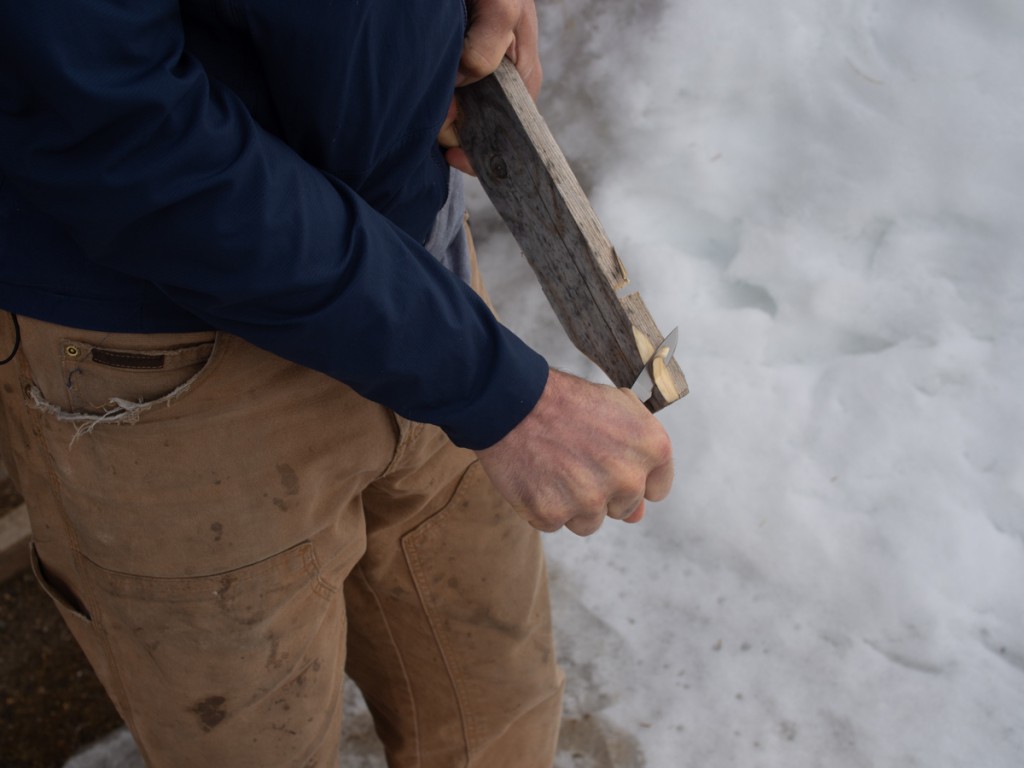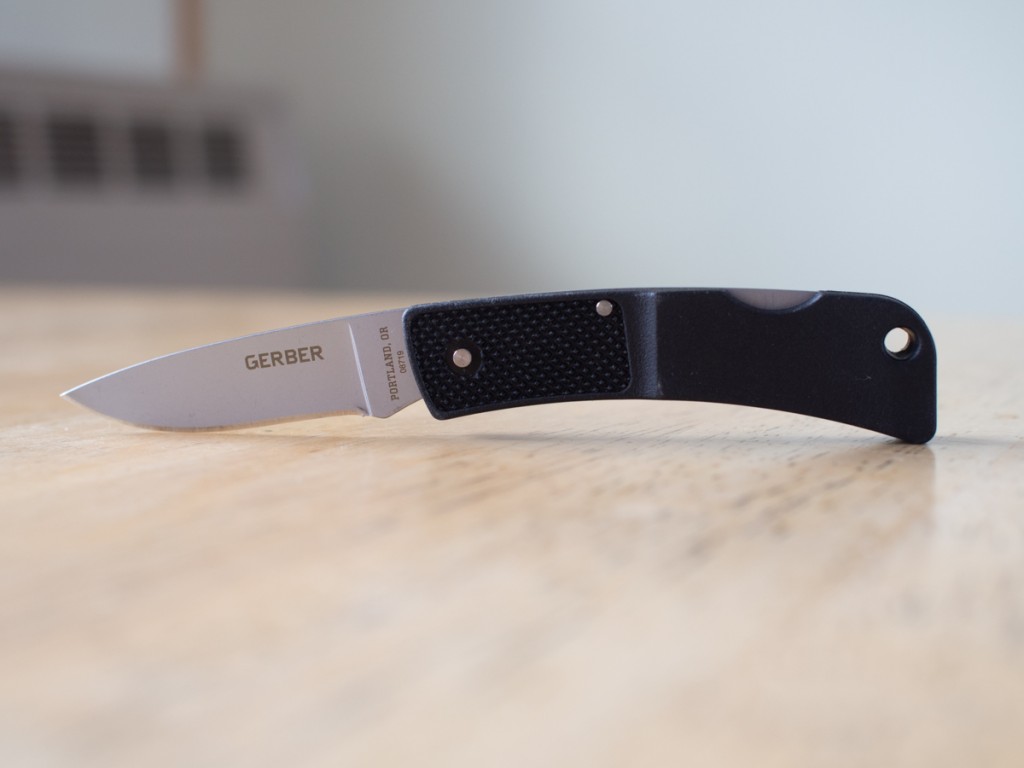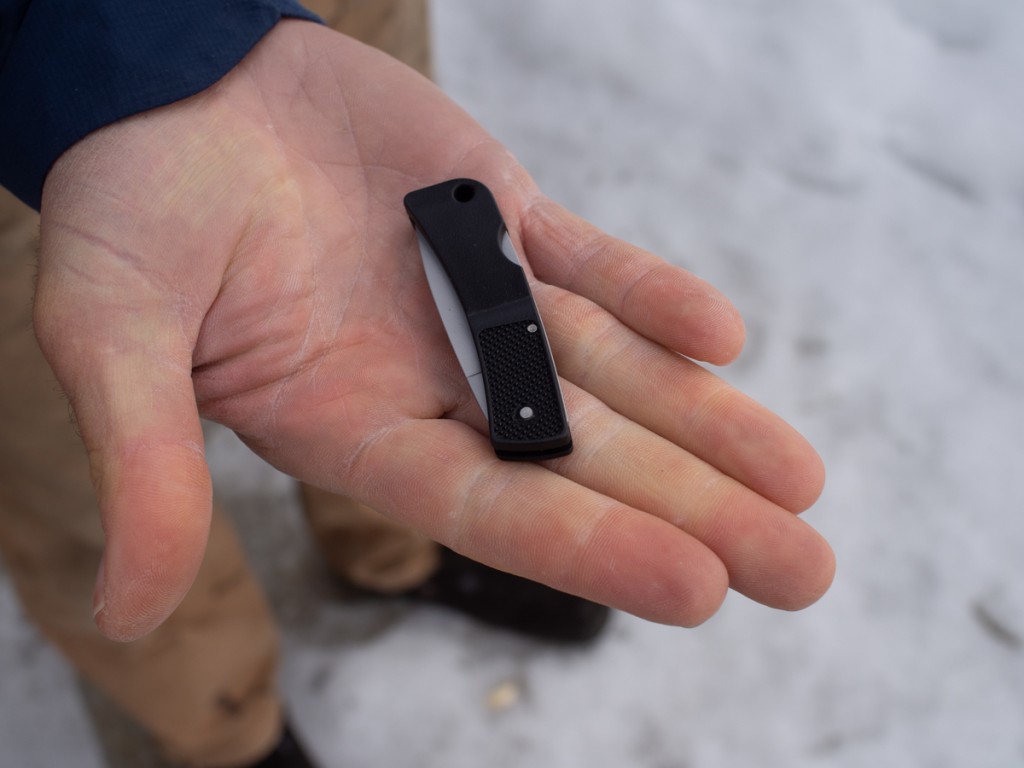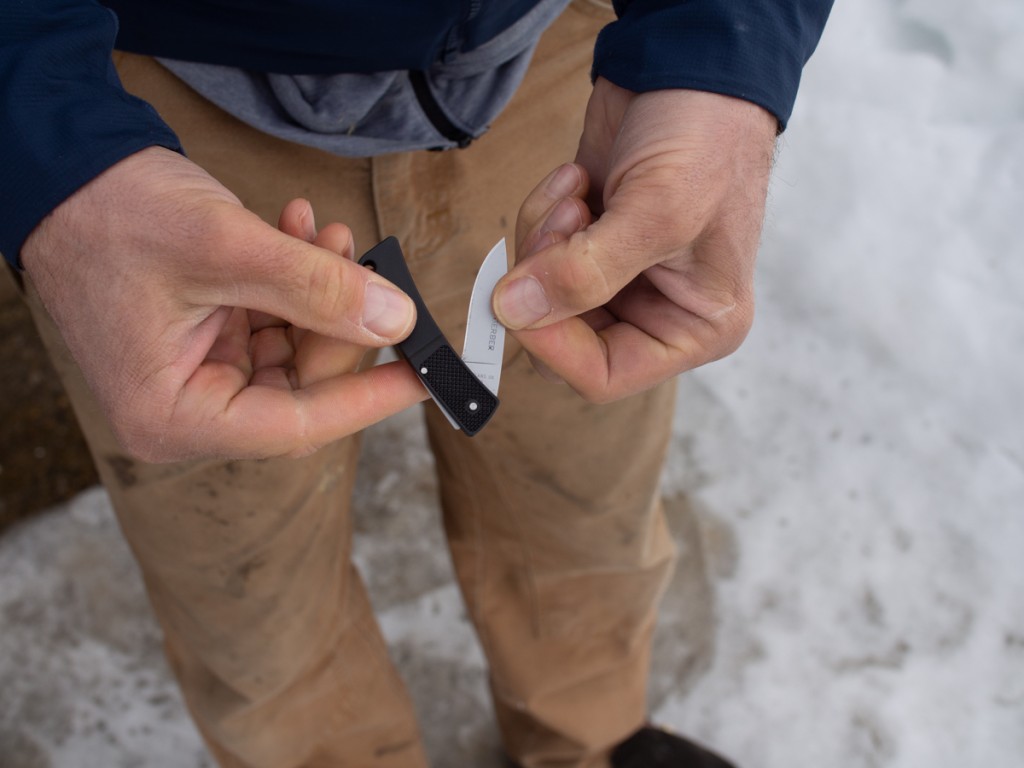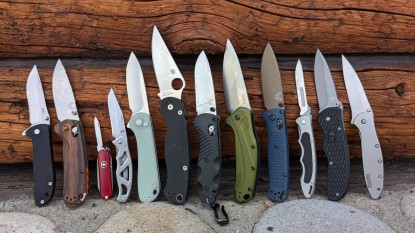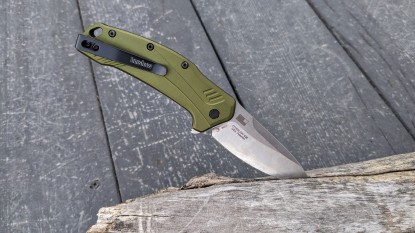Gerber Ultralight LST Review
Our Verdict
Our Analysis and Test Results
The Ultralight LST is truly tiny and light. The ultra-simple construction keeps things feathery, compact, affordable, and functional. There isn't even a fingernail slot in the blade. You open the LST by pinching the blade between your fingers. This works just fine, but we mention it to note just how streamlined the design of this knife is. For any human-powered adventure where a blade is seldom used or only employed for light-duty tasks (backpacking, rock climbing, bike packing, etc.), this Gerber is the best we know of. Where ounces count, choose a knife that weighs less than one. In our tests, our scale clocks it at just over half an ounce. That's well below the weight of one carabiner or a few cashews. You won't dig this knife for elaborate car camping food preparation. But for the occasional application, like cutting tent cords or whittling an improvised fork, the Ultralight LST works great. And we would know because our lead test editor probably forgets his backcountry eating utensils more than he remembers them.
Performance Comparison
Blade and Edge Integrity
Gerber makes about a zillion knives and tools with blades. They do so all through the lower range of consumer budgets. All their blades are more than serviceable, but none are sophisticated. The Ultralight LST blade fits this very description.
Gerber shapes it from a budget level, proper knife steel called “420HC”. It adds mere pennies to manufacturing costs compared to the generic material you would find in a “flea market” knife, but it also adds significant performance. It'll hold an edge through an extended backpacking trip but take a new edge with commonly available sharpening implements.
The Ultralight LST blade is a little thicker, with a steeper edge angle than we would expect in such a tiny knife. As compared to other tested minuscule knives, this Gerber has a more robust blade. We like this. Only fractions of a gram of steel are required to beef up the blade the Gerber has, but you get noticeably greater edge integrity and blade confidence. You will further appreciate the sturdiness for light prying and other “off-label” uses of the LST's blade.
Ergonomics
A tiny knife is harder to use. In your balled-up fist, the Gerber LST almost disappears. For most cutting tasks, you will be manipulating this knife with your fingers. You can't expect a half-ounce knife to handle extended or heavy-duty applications. You carry this knife for its minimal functionality, minimalist form, and mass.
Even though it is tiny, the handle of the Ultralight LST is textured and contoured to optimize grip and control. Get right into it with some precious fresh backcountry tomatoes for your luxurious improvised pico de gallo, and the texture near the knife pivot will lend traction and control. The butt of the handle is contoured to give your meaty fist a little more purchase in stouter tasks. As mentioned above, the blade opens by pinching it between your fingers. This works fine unless something in the equation is slippery. You might struggle to grab that blade with oily or sunscreen-covered fingers.
Portability
The numbers tell the story. Half an ounce and just over 2.5 inches long is tiny. Compared to other knives in our review, you choose the Ultralight LST for its ultimate portability.
This thing will disappear into even the most crowded backpack or pocket. If anything, the knife is so tiny that it is easy to lose. A colorful bit of string as a lanyard makes it easier to see.
Vociferous members of our test team have long sought a truly functional but tiny knife for human-powered adventures. The Ultralight LST is exactly that.
Construction Quality
Gerber isn't known for making super tight gear. None of what we've tested from them tops the heap in terms of construction quality. They hit a price point and make fully serviceable gear, but it's a little sloppy. The Ultralight LST is in that category. We will allow some construction compromises for something so light and small. You don't need something this small to be strong enough to pry open a can of paint. You don't need something this small to be strong enough to chop through a piece of oak flooring.
Nonetheless, it seems that Gerber could have made this knife the same weight, size, and cost but still made it a little more robust. In use, we can feel the plastic handle flexing. It flexes torsionally, and the two sides of the hollowed-out handle bend toward one another as you squeeze the handle to hold on. Right from the beginning, the main pivot has a little wiggle. Again, it all works. But it wouldn't hurt to be a little tighter across the board.
Other Features
There are no other features on the Ultralight LST.
You pick this knife for its compact stature and light weight. When you pare it down this far, incorporating other features boosts costs significantly.
Should You Buy the Gerber Ultralight LST?
The Gerber Ultralight LST is the knife you need for backpacking or other human-powered outings, and you get more than you pay for in terms of portability and blade integrity. This will do what you need to do if you need a blade on non-consumptive endeavors in the wild. But look elsewhere for hunting or fishing. It'll hold up to normal and light use, but you might suffer a bit for trying to force it into a more robust application or any tasks that involve extensive prying or heavy cutting.
What Other Pocket Knives Should You Consider?
The Ultralight LST is a great bargain, but it is a specialty knife best suited to specialty uses. The Petzl Spatha is a full-size but similarly special knife, designed specifically for climbers and available at a dirt-bag price point. But for regular daily usage, it is worth the investment in a high-quality knife like the Kershaw Leek. For a high-end knife just as worthy of human-powered adventures, check out the award-winning Benchmade 535 Bugout.




